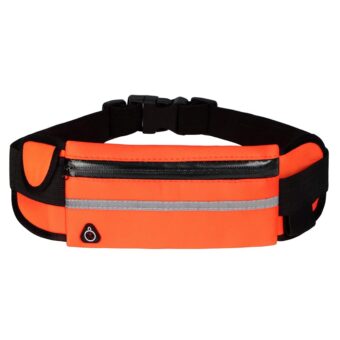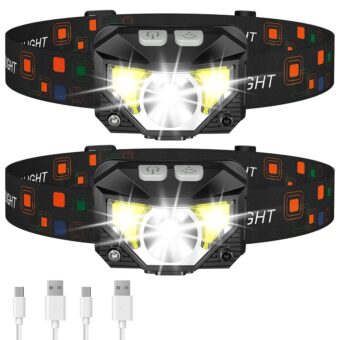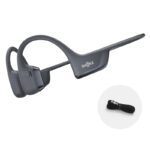This step-by-step guide outlines the process of replacing a serpentine belt, an essential component that drives various engine accessories such as the alternator, power steering pump, and air conditioning compressor. The guide emphasizes the importance of regular maintenance to ensure optimal vehicle performance and avoid potential breakdowns. It details the necessary tools, safety precautions, and specific instructions to remove the old belt and install a new one, making it accessible for both novice and experienced DIYers.



Gather the necessary tools and materials before diving into the replacement process. Start by acquiring a new serpentine belt that matches your vehicle’s specifications; checking your owner’s manual can help ensure you choose the correct size and type. Next, grab a ratchet and socket set, as these will be essential for loosening and removing the components that secure the serpentine belt. If your vehicle requires it, get a belt tensioner tool to help relieve tension on the old belt, making it easier to remove.
Don safety gloves and glasses to protect yourself during the process. Having these safety items ready not only provides physical protection but also enhances your focus while working. Lay out all your tools within easy reach, so you can work efficiently without having to search for items mid-task. Organizing your workspace will streamline the entire process, helping you replace the serpentine belt quickly and safely.



Locate the Serpentine Belt Routing Diagram
Locate the serpentine belt routing diagram by checking for a sticker typically found under the hood of your vehicle. This diagram is crucial for understanding how the serpentine belt wraps around the various pulleys and components, ensuring that everything operates smoothly.
- Open the hood of your vehicle and secure it with the prop rod if necessary.
- Look for a sticker or decal on the radiator support, the front of the engine cover, or on the underside of the hood itself.
- Examine the diagram carefully. You’ll see arrows indicating the direction of the belt and lines showing the path it should take around the pulleys.
For example, if you have a V6 engine, the diagram might depict the belt routing around the alternator, power steering pump, and air conditioning compressor. If you can’t find the diagram, consult your vehicle’s owner manual or check online resources specific to your vehicle model for a digital copy.
Release Tension from the Belt
Locate the tensioner pulley, which is typically found near the serpentine belt. Identify the direction the tensioner normally operates; this is usually indicated by an arrow on the pulley itself. Using a ratchet or a belt tensioner tool, position the tool onto the tensioner pulley’s bolt. Pull or push the tool in the opposite direction of the arrow to release the tension from the serpentine belt.
While holding the tensioner in this position, carefully slide the belt off one of the pulleys, ensuring you don’t let go of the tensioner until the belt is completely removed. After the belt is off, slowly release the tension on the tensioner. Make sure the tensioner returns to its original position without any sudden movements, as this could cause damage.
Remove the Old Belt
Release the tension on the serpentine belt by using the ratchet or wrench to turn the tensioner pulley. Once the tension is released, carefully slide the old serpentine belt off the pulleys. Pay close attention to the routing of the belt, noting how it wraps around each component—such as the alternator, power steering pump, and crankshaft pulley. You can take a picture or sketch the routing on a piece of paper for reference.
As you remove the belt, look for any signs of wear, like cracks or fraying, which can indicate the need for replacement. For example, if the belt runs over an idler pulley, observe how it loops around it; this will help you ensure that the new belt follows the same path. If there’s a specific order in which the belt goes around the components—like going under one pulley and over another—make a mental note. This will simplify the installation of the new serpentine belt and ensure everything functions smoothly once the job is complete.
Install the New Serpentine Belt
Refer to the routing diagram, which is often located near the front of the engine bay or in your vehicle’s service manual. This diagram is crucial as it shows the correct path for the serpentine belt around the various pulleys. Identify each pulley and follow the diagram step-by-step to ensure you route the new belt correctly. Pay close attention to the orientation of the belt; it should be positioned so that it sits firmly in the grooves of each pulley without any twists or turns.
Install the new serpentine belt by carefully placing it over the pulleys, starting from the crankshaft pulley and following the routing indicated. For instance, if your diagram shows the belt going over the alternator and under the idler pulley, make sure you replicate that exact order. As you work your way around, gently press the belt into the grooves, ensuring it’s seated evenly to avoid slippage. Check that the belt is aligned straight and snugly fitted against each pulley, as a misaligned belt can lead to premature wear or failure.
Final Thoughts on Replacement
In conclusion, replacing a serpentine belt is a manageable task that can greatly enhance your vehicle’s performance and longevity. By following the steps outlined in this guide, you can confidently tackle this maintenance task and ensure that your engine components work harmoniously. Remember, keeping an eye on your belt’s condition can save you from more significant issues down the road. Happy driving!

















I followed the guide but when I put the new belt on, it kept slipping off the pulleys. Anyone know why that might happen? I’m worried I did something wrong. Help!
Slipping can happen if the belt isn’t aligned correctly or if the tensioner is worn. Double-check the routing diagram and make sure the tensioner is applying enough pressure. Good luck!
Just replaced my serpentine belt using this guide and it was a breeze! I felt so proud afterward. I saved a bunch of cash by doing it myself. Thanks for the clear instructions!
So glad to hear that you had success! Doing it yourself not only saves money but also gives you a great sense of accomplishment. Keep up the good work!
Just did this on my 2008 Honda Accord and it went super smoothly! I used a Gates belt, and it fit perfectly. Definitely recommend having a friend help you hold the engine cover while you work. Made it so much easier!
Awesome to hear it went well for you! Gates belts are reliable. Having a buddy around can really make a difference; teamwork makes the dream work!
Has anyone here replaced a belt on a turbocharged engine? I heard it can be a bit trickier because of the extra components. Any tips?
Good question! Turbo setups can add complexity. Make sure to check for any additional tensioners or pulleys specific to turbo models. Take your time and don’t rush it!
Make sure to check your pulleys for wear and tear when you’re at it. I replaced my belt but didn’t notice one of the pulleys was worn down, so I had to do it all over again a week later. Annoying!
That’s a solid point! It’s always a good idea to inspect everything while you’re in there. Saves time and frustration in the long run!
I found that using a serpentine belt tool made the tension release way easier than just using a wrench. Has anyone else tried that? I was struggling at first until I borrowed one from a friend. It’s a game changer!
Great tip! A serpentine belt tool can definitely make the job smoother. Glad to hear it worked well for you!